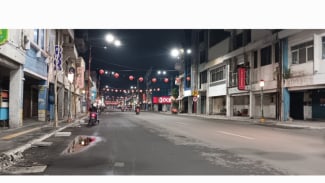Slow Living Movement: Everything about This New Trend on Social Media
- U-Report
Jakarta – Recently, trend slow living is being circular on social media like TikTok, Instagram, and others. Slow Living is actually a mindset whereby someone curate a more meaningful and conscious lifestyle that is in line with what he/she value most in life.
It means doing everything at the right speed. Instead of striving to do things faster, the slow movement focuses on doing things better. Often, that means slowing down, doing less, and prioritising spending the right amount of time on the things that matter most to you, as reported by Slow Living LDN site.
By slowing down and intentionally placing your true values at the heart of your lifestyle, a slow living mindset encourages you to live in self-awareness and make conscious, purposeful decisions for the benefit of your well-being and that of the planet.
Slow living denies that being busy equates to being successful or important. It means being present and in the moment, it celebrates quality over quantity, living with intent, being conscious and considered.
Ilustrasi bahagia dan menjaga kesehatan.
- ist
To adopt a slower mindset is to switch off autopilot and make space for reflection and self-awareness.
History of the slow movement
Slow living is part of the wider slow movement which began in the 1980s in Italy. Faced with the opening of a McDonald’s in the heart of Rome, Carlo Petrini and a group of activists formed Slow Food, a movement that defends regional food traditions.
The slow food movement now has supporters in over 150 countries and continues to protect gastronomic traditions, promote fair pay for producers, encourage enjoyment of good quality food and engage in activities around sustainability.
Carl Honoré, one of the most well-known authors and speakers on the slow movement, helped bring the concept of slow living into the mainstream in 2004 with the publication of his book In Praise of Slowness.
Honoré explores how Slow Food sparked a broader slow living movement with ‘slow’ now being applied to other areas of life which have experienced huge acceleration, including work, parenting and leisure.
Since the book’s publication, the speed at which we live has only continued to increase, but so has the awareness of the slow living movement.
Today, slow travel, slow fashion, slow fitness, slow gardening, slow interiors, slow design, slow thinking, slow news and slow working are all examples of further offshoots of the slow living movement. More and more people are acknowledging that faster isn’t always better.



























